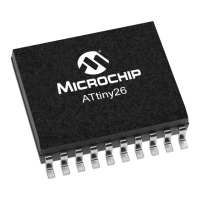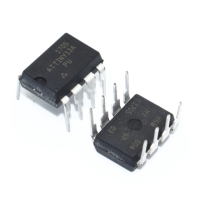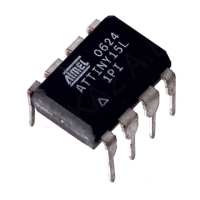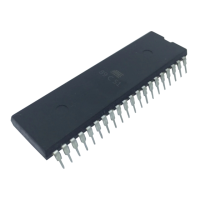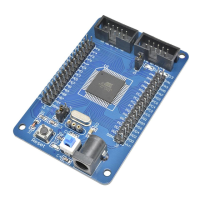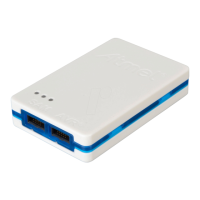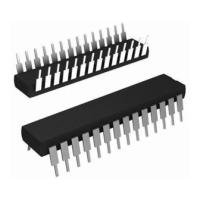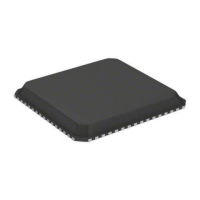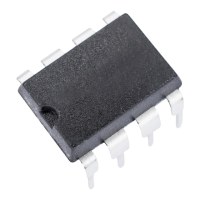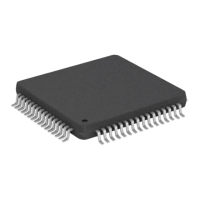74
7598H–AVR–07/09
ATtiny25/45/85
Table 12-2 shows the COM0B1:0 bit functionality when the WGM02:0 bits are set to fast PWM
mode.
Note: 1. A special case occurs when OCR0B equals TOP and COM0B1 is set. In this case, the Com-
pare Match is ignored, but the set or clear is done at TOP. See “Fast PWM Mode” on page 67
for more details.
Table 12-3 shows the COM0B1:0 bit functionality when the WGM02:0 bits are set to phase cor-
rect PWM mode.
Note: 1. A special case occurs when OCR0B equals TOP and COM0B1 is set. In this case, the Com-
pare Match is ignored, but the set or clear is done at TOP. See “Phase Correct PWM Mode” on
page 69 for more details.
• Bits 3, 2 – Res: Reserved Bits
These bits are reserved bits in the ATtiny25/45/85 and will always read as zero.
• Bits 1:0 – WGM01:0: Waveform Generation Mode
Combined with the WGM02 bit found in the TCCR0B Register, these bits control the counting
sequence of the counter, the source for maximum (TOP) counter value, and what type of wave-
form generation to be used, see Table 12-7. Modes of operation supported by the Timer/Counter
unit are: Normal mode (counter), Clear Timer on Compare Match (CTC) mode, and two types of
Pulse Width Modulation (PWM) modes (see “Modes of Operation” on page 66).
Table 12-5. Compare Output Mode, Fast PWM Mode
(1)
COM01 COM00 Description
0 0 Normal port operation, OC0B disconnected.
01Reserved
1 0 Clear OC0B on Compare Match, set OC0B at TOP
1 1 Set OC0B on Compare Match, clear OC0B at TOP
Table 12-6. Compare Output Mode, Phase Correct PWM Mode
(1)
COM0A1 COM0A0 Description
0 0 Normal port operation, OC0B disconnected.
01Reserved
10
Clear OC0B on Compare Match when up-counting. Set OC0B on
Compare Match when down-counting.
11
Set OC0B on Compare Match when up-counting. Clear OC0B on
Compare Match when down-counting.
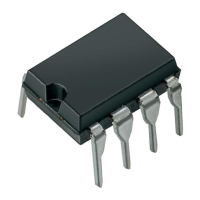
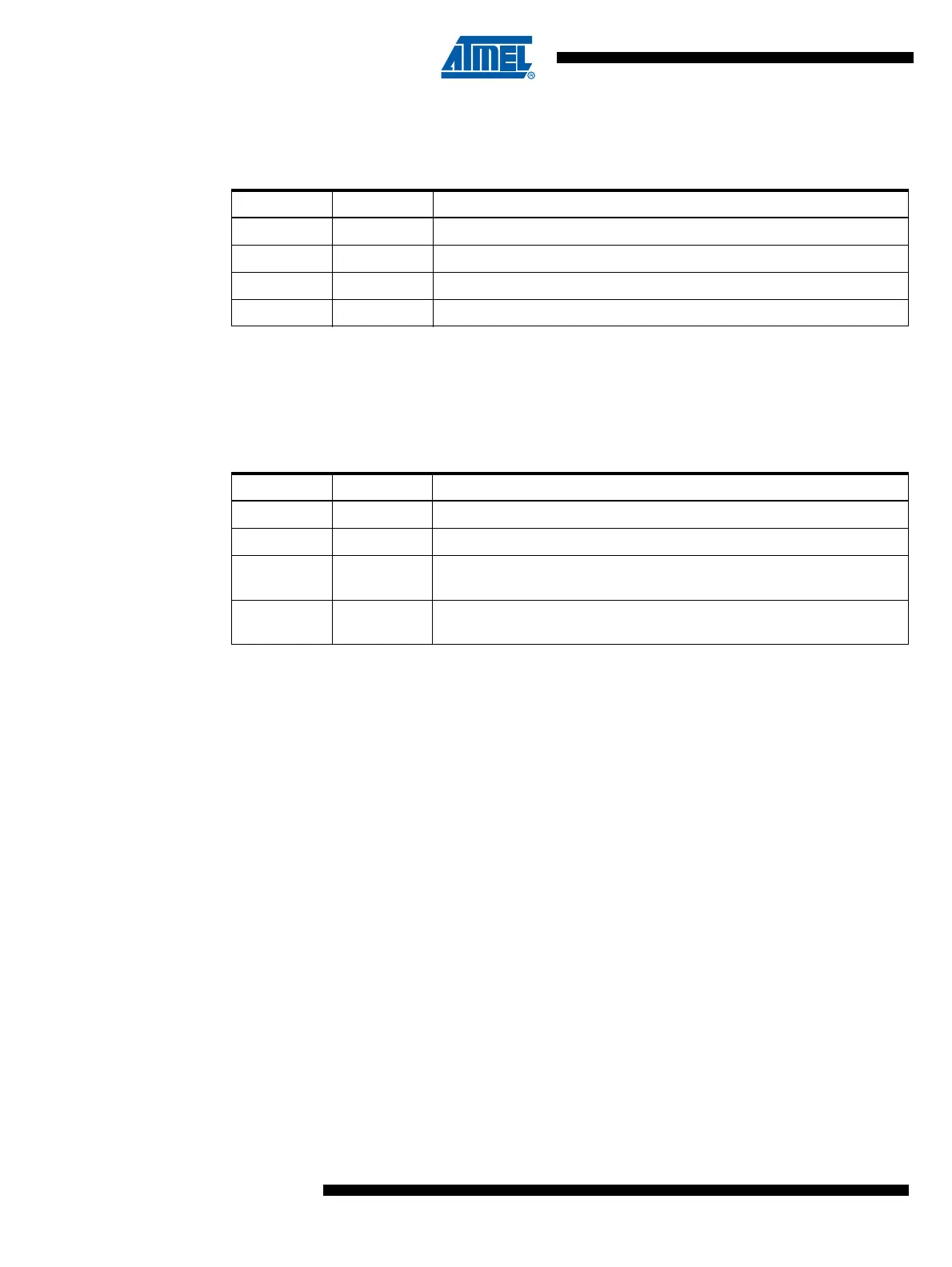